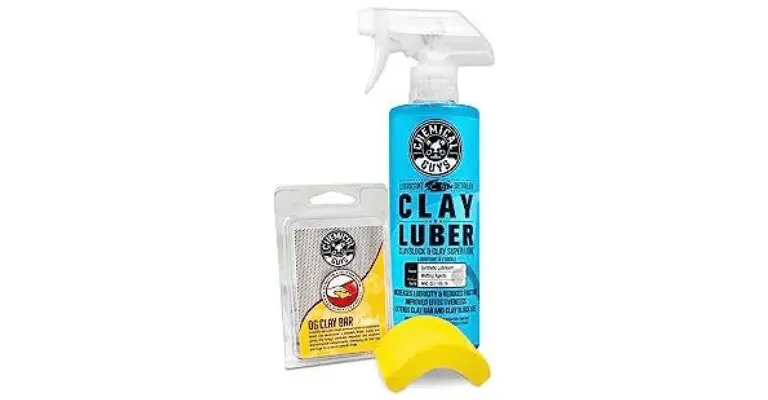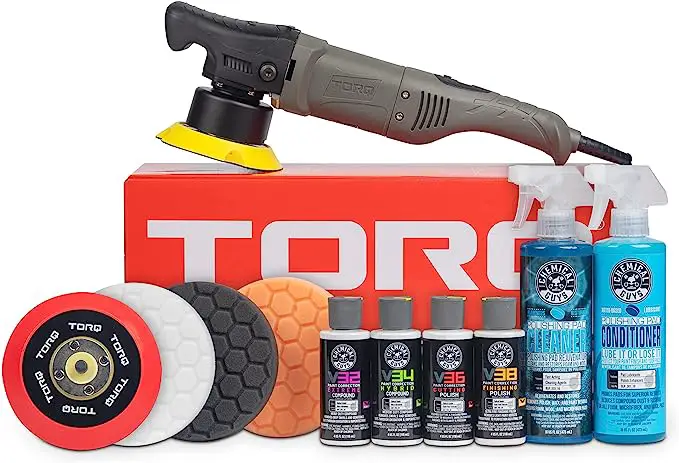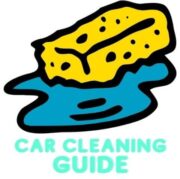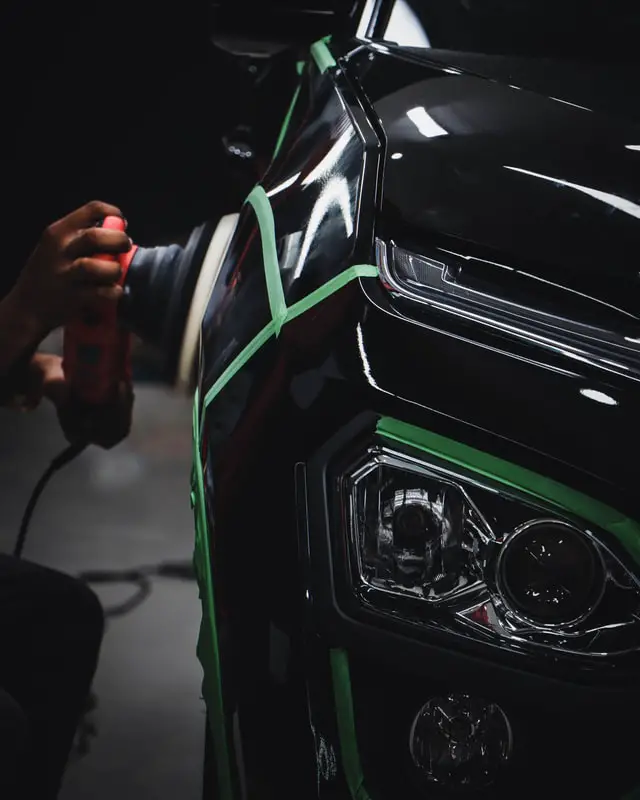Last Updated on September 20, 2023 by Chase Manhattan
Have you ever wondered what lies beneath the mesmerizing shine of a ceramic-coated car? While ceramic coatings have become increasingly popular for their ability to protect and enhance a vehicle’s paintwork, there may come a time when you need to bid farewell to this glossy shield. But fear not! We’re here to unravel the mysteries surrounding the removal of ceramic coating and guide you through this transformative process.
In this comprehensive guide, we will delve into the reasons why you might need to remove a ceramic coating, explore the pitfalls of improper installation and a lack of preparation, discover how an aging or damaged coating can impact your car’s appearance, and shed light on the best methods to ensure a seamless removal. Whether you’re a do-it-yourself enthusiast or contemplating seeking professional assistance, we’ll equip you with the knowledge you need to make informed decisions.
Get ready to embark on an adventure that uncovers the secrets of removing ceramic coating, as we address common questions, debunk myths, and share expert tips to restore your car’s luster. Say goodbye to the old and faded, and welcome a fresh new canvas that not only catches eyes but also safeguards your cherished automobile.
So, let’s unlock the gates and enter the realm of ceramic coating removal, where a vibrant, rejuvenated car awaits you on the other side.
- How To Reset A Ford Instrument Cluster - June 4, 2022
- How To Remove Scratches From Black Plastic Bumpers [Guide] - June 4, 2022
- How To Get Water Stain Out Of Car Roof - June 4, 2022
If you’re more of a visual learner, like myself, I suggest checking out this YouTube video for some hands on insight into preparing your car for ceramic coating removal. Otherwise, keep reading!
Quick Navigation
Properly Preparing The Car
I would argue that this is the most important step of the process; properly preparing the car. As with most things, this is where your results are garnered. Improper preparation can read to sub-par results at best, and lasting damage at worst. So keep reading for insights into my own preparation methods, and then I’ll show you three different ways you can go about removing your ceramic coating.
Materials needed:
- Car wash soap
- Wash mitt or sponge
- Microfiber cloths or towels
- Clay bar or clay mitt
- Iron remover (optional)
- Tar remover (optional)
- Paint cleaner or polish (optional)
Related article: Best Microfiber Towels for Ceramic Coating
Step 1: Wash the car
Start by thoroughly washing the car using car wash soap and a wash mitt or sponge.
Pay extra attention to areas where dirt and grime may accumulate, such as the lower panels and wheel wells.
Rinse the car thoroughly to ensure all soap residue is removed.
Step 2: Inspect the surface
Carefully inspect the car’s surface for any bonded contaminants, such as tar, bug splatters, or tree sap.
Use an appropriate tar remover to remove any tar spots.
If there are any iron particles or brake dust embedded in the paint, you may consider using an iron remover to dissolve them.
Step 3: Clay the surface
To remove bonded contaminants, take a clay bar or clay mitt and lubricate the surface using a detailing spray or soapy water.
Gently glide the clay bar or mitt across the paintwork, applying light pressure. This will help remove embedded contaminants.
Periodically fold and knead the clay bar or mitt to expose a clean surface.
Step 4: Optional step – Paint correction
If the car’s paint has swirl marks, scratches, or other imperfections, you may want to perform paint correction before ceramic coating removal.
Use a paint cleaner or polish to refine the paint and restore its appearance. Follow the product instructions for best results.
Step 5: Dry the car
After clay barring and any optional paint correction, thoroughly dry the car using microfiber cloths or towels.
Ensure there is no residual moisture left on the surface, as it may interfere with the ceramic coating removal process.
Congratulations! You have successfully prepared your car for ceramic coating removal. Following these steps will help ensure a clean and contaminant-free surface for the next stage of the process.
Related article: How long does ceramic coating take to cure?
Again, for the visual learners out there; I’m including a ceramic coating removal video for your convenience. If you’d prefer written step-by-step instructions, keep reading!
How To Remove Ceramic Coating
Finally, what you’re here for! In the next three sections, I’m going to be showing you the three best ways to remove ceramic coating.
Isopropyl Alcohol (Chemical Removal Method)
Materials needed:
- Clay bar or clay mitt
- Isopropyl alcohol
- Microfiber cloths or towels
- Wax or sealant (optional)
Step 1: Prepare the surface
Ensure the area you are working on is clean and free of any dirt or debris.
If the ceramic coating has been exposed to strong sunlight or is particularly hardened, you may need to use a clay bar or mitt to gently remove any surface contaminants.
Step 2: Apply isopropyl alcohol
Pour some isopropyl alcohol onto a clean microfiber cloth or towel.
Working in small sections, gently rub the surface with the alcohol-soaked cloth. The alcohol will help break down the ceramic coating and loosen its bond with the surface.
Step 3: Wipe off the ceramic coating
After applying the alcohol, use a clean microfiber cloth or towel to wipe off the ceramic coating. Apply light pressure and use a circular motion to ensure thorough removal.
Continue this process, working in small sections, until the entire surface is free from ceramic coating.
Step 4: Inspect the surface
After removing the ceramic coating, inspect the surface to ensure all traces of coating have been successfully removed.
If you notice any remaining spots or stubborn areas, you may need to repeat steps 2 and 3 until the surface is completely clean.
Read more: How long does ceramic coat last?

Clay Bar Method (Manual Removal)
Materials needed:
- Clay bar or clay mitt
- Microfiber cloths or towels
- Wax or sealant (optional)
Step 1: Prepare the surface
Ensure the area you are working on is clean and free of any dirt or debris.
If the ceramic coating has been exposed to strong sunlight or is particularly hardened, you may need to use a clay bar or mitt to gently remove any surface contaminants.
Step 2: Use the clay bar or mitt
Take a piece of the clay bar or clay mitt and knead it in your hands until it becomes pliable.
Spray a clay lubricant or water onto a small section of the surface.
Gently rub the clay bar or mitt back and forth over the lubricated area using light pressure. This will help lift and remove the ceramic coating.
Step 3: Wipe off the ceramic coating
After using the clay bar or mitt, use a clean microfiber cloth or towel to wipe off the removed ceramic coating and any residue.
Apply light pressure and use a circular motion to ensure thorough removal.
Continue this process, working in small sections, until the entire surface is free from ceramic coating.
Step 4: Inspect the surface
After removing the ceramic coating, inspect the surface to ensure all traces of coating have been successfully removed.
If you notice any remaining spots or stubborn areas, you may need to repeat step 2 and 3 until the surface is completely clean.
Optional Step 5: Apply new protection
After removing the ceramic coating, you may consider applying a new layer of wax or sealant to protect the surface and enhance its appearance.
Follow the instructions provided with your chosen wax or sealant product for the best application method.
Might interest you: Ceramic Coat vs Wax

Orbital Buffer Method (Mechanical Removal)
Materials needed:
- Orbital buffer (with appropriate pad)
- Microfiber cloths or towels
- Clay bar or clay mitt (optional)
- Wax or sealant (optional)
Step 1: Prepare the surface
Ensure the area you are working on is clean and free of any dirt or debris.
If the ceramic coating has been exposed to strong sunlight or is particularly hardened, you may need to use a clay bar or mitt to gently remove any surface contaminants.
Step 2: Attach the appropriate pad to the orbital buffer
Select a foam or microfiber pad suitable for ceramic coating removal.
Attach the pad securely to the orbital buffer according to the manufacturer’s instructions.
Step 3: Use the orbital buffer
Turn on the orbital buffer at a low speed to prevent splatter and apply the buffer to the coated surface.
Move the buffer in a slow, controlled motion across the surface, applying light to moderate pressure. Avoid staying in one spot for too long to prevent damage.
Step 4: Wipe off the ceramic coating
After using the orbital buffer, use a clean microfiber cloth or towel to wipe off the removed ceramic coating and any residue.
Apply light pressure and use a circular motion to ensure thorough removal.
Step 5: Inspect the surface
After removing the ceramic coating, inspect the surface to ensure all traces of coating have been successfully removed.
If you notice any remaining spots or stubborn areas, you may need to repeat step 3 and 4 until the surface is completely clean.
Why Are You Removing The Ceramic Coating?
Ceramic coatings provide a durable and protective layer for a car’s paintwork, but there may be circumstances where it becomes necessary to remove the coating. Common reasons for needing to remove ceramic coating include standard maintenance and reinstallation, improper installation, an old or ineffective coating, or a damaged coating.
Want to protect that precious ceramic coating? Read these:
> Best Car Soap for Ceramic Coating Care
> Best Detail Spray for Ceramic Coated Cars
Improper installation
If the ceramic coating was improperly installed, it may have formed voids or other inconsistencies that lead to reduced effectiveness or appearance. This may include issues such as crosshatching or uneven application, inadequate curing time, or failure to properly clean and prepare the surface before application. In such cases, it may be necessary to remove the coating so that it can be reapplied correctly.
An old coating
Even properly installed ceramic coatings will begin to wear down over time, particularly in areas that are frequently exposed to sunlight or harsh environmental conditions. An old ceramic coating may become dull, discolored, or otherwise unsightly. In such cases, removing the old coating will enable a fresh new coating to be applied, restoring the car’s appearance and protective qualities.
A damaged coating
Finally, a ceramic coating that has been damaged, such as from exposure to corrosive chemicals or impact, may become ineffective or even cause damage to the underlying paint. Removing the damaged coating will help prevent further damage and enable repair or replacement of the coating as necessary.
In summary, while ceramic coatings are an excellent way to protect a car’s paint, there may be circumstances where it becomes necessary to remove the coating. This may include improper installation, an old or worn out coating, or a damaged coating that could be causing further issues.
FAQs
Can I remove ceramic coating myself, or should I hire a professional?
While ceramic coating removal can be done by an individual, it requires specialized equipment and knowledge to do it properly. Therefore, it may be more advisable to hire a professional to ensure that the process is done correctly and safely.
How long does it typically take to remove ceramic coating from a car?
The time required to remove ceramic coating will depend on the size of the vehicle and the level of difficulty to remove the coating. It may take several hours or even a full day to remove the coating from the entire car properly.
Can I reapply ceramic coating immediately after removing the old coating?
It is not recommended to reapply ceramic coating immediately because the surface must be completely free from any residue or contaminants, which requires a thorough cleaning and preparation process. Therefore, it is advisable to wait at least a few hours or until the surface is entirely clean and dry before reapplying the ceramic coating.
What is the best method to remove ceramic coating from a car?
The best method is to use a combination of a rotary polisher with an appropriate pad and a specially formulated compound or polish. Also, it is essential to work in small sections at a time to ensure thorough coverage and avoid overworking the surface.
How do I know if my ceramic coating needs to be removed?
You may notice that the ceramic coating has become discolored or damaged, lost its water beading properties, or no longer repels dirt and dust. Additionally, if the coating was not properly applied, you may notice areas of uneven coverage, inconsistent sheen, or other imperfections.

